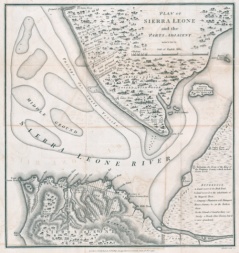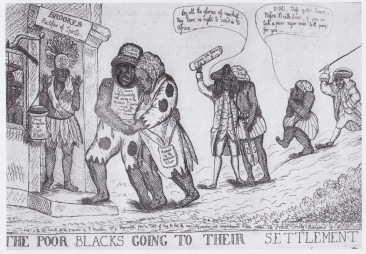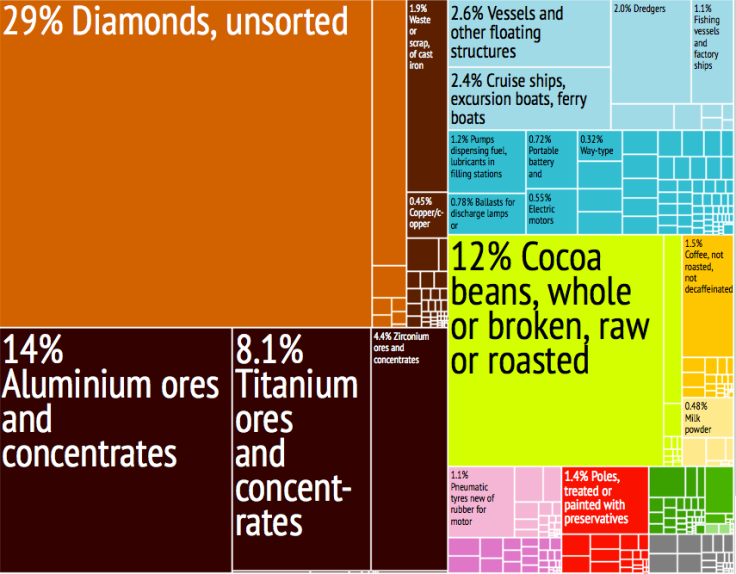Sierra Leone is a western African country on the Atlantic Ocean. It is bordered by Liberia to the southeast, by Guinea to the northeast and by the Atlantic Ocean to the southwest. Its original Portugese name was given by the 15th-century explorer Pedro de Sintra and means “Lion Mountains”. When Britain was a great colonial power, Sierra Leone was one of its colonies.
History of Sierra Leone
In the 1780s the British government was faced with a problem. Currently the slave trade between Britain and the West Indies was still flourishing and huge profits were made by traders, owners of plantations and merchants. It contributed to the massive wealth of the City of London and other financial and shipping centers. Bunce Island in Sierra Leone was of one of the largest slave forts in West Africa during the transatlantic slave trade period. Early advocates of the abolition of the slave trade began to focus on the legality of importing slaves to England. They finally could force Chief Justice Lord Mansfield to make a judgement (1772 Somerset judgment). It made the transport of slaves to Britain unlawful.
The abolition of the slave trade continued in the late 18th century. The American War of Indepedence (in the 1770s) brought for thousands of slaves who were fighting for Britain the opportunity to win freedom. After the war ended more than 15000 ex-slaves found their way to London. They had to face unemployment and poverty.
A leading abolitionist named Granville Sharp (1735-1813) became more and more concerned by the growing number of unemployed and homeless Africans in London. Sharp could gain the support of the British government and arranged a passage for 400 men and women to a new home on the African West coast at the mouth of the Sierra Leone river. After the Royal Navy captain had brought the Africans to Sierra Leone and had negotiated a treaty for their stay with King Tom, the local ruler, he returned to England. The British government had no further responsibility for this settlement that became a failure. Within 2 years the settlement was deserted because of disease, heavy rainfall and the hatred of king Tom’s heir, king Jimmy.
Back in England Sharp got financial backing for a new settlement. The Sierra Leone Company was formed and new settlers were recruited. 1000 former slaves who had escaped to Canada went on the passage to Sierra Leone in 1792. The new settlers built their own town named Freetown. It was build in American style and developed to a trading centre.
Tensions grew because the Sierra Leone Company wanted to make all important policy decisions but the settlers wanted to have self-government. The company also wanted the settlers to pay for the land they were living on but the settlers refused to being tenants. Besides the African rulers started to realize that they lost their land forever to the Sierra Leone Company. After the arrival of British troops they attacked Freetown in 1801, 1802 and 1807. The African rulers were defeated. Meanwhile the trading opportunities of the Sierra Leone Company were affected by the war with France in a bad way. The company went bankrupt and the British government took control. Sierra Leone became a British colony.


On the left: “Map showing Freetown and its environs http://www.kingscollections.org/exhibitions/specialcollections/i-speak-of-africa/towards-emancipation/the-sierra-leone-company
Reasons why Great Britain wanted Sierra Leone to have as colony
At first Sierra Leone was chosen as a place where free slaves could find a new home. One of the most valuable resources in Sierra Leone recognized by the British were diamonds. Sierra Leone was and is rich in diamonds. In many of the rivers and caves Diamonds could and can be found. Diamond mining became crucial to Sierra Leone’s economy when the British arrived.
Freetown became residence of the British colonial governor in the early 19th century. There the administration for the Gold Coast (Ghana) and Gambia was done as well. Sierra Leone grew out to the educational centre of British West Africa. In 1827 the British built Fourah Bay College. It attracted English-speaking Africans on the West Coast very quickly. Fourah Bay College was the only European-style university in western Sub-Saharan Africa for more than a century.
In 1961 Sierra Leone became independent.
Modern history and economy of Sierra Leone
To the independence constitution was formally put an end during the series of military coups which followed the independence. In 1967 military coup sets Premier Siaka Stevens’ government out of position. But he became president in 1971 after Sierra Leone became a republic. In 1978 a new constitution established a one-party state. The All People’s Congress was the recognized party. Return to a multiparty system took place in 1991. Many of the parliamentary features of the independence constitution returned.
Today Sierra Leone’s major resource are still Diamonds have caused wide-spread bloodbath and are one of the reasons for Sierra Leone’s modern day economy to collapse.
Sierra Leone’s major industries are agriculture, forestry and fisheries. For these industries 47,7% land is used. Their contribution is 59% of GDP (2010). Subsistent farming helps nearly half of the working-age inhabitants to survive. Rice, coffee, palm kernels, palm oil, peanuts, poultry, cattle, sheep, pig and fish are the main agricultural products. Cocoa, coffee and fish are the most important agricultural exports of Sierra Leone. The country’s major trading partners are Belgium, France, Netherlands and the US. Other industries are diamond mining and petroleum refining. Sierra Leone has rich resources of diamonds, gold, bauxite, rutile and iron ore deposits. Mining makes almost a third of GDP. The main export industries include diamonds, rutile, cocoa, coffee and fish. According to CIA Word Factbook 2012 more than 50% of all goods are exported to China.

60% of Sierra Leone’s population lives below the poverty line. Sierra Leone is ranked number 14 in the top 25 poorest countries (GDP per capita $1,651, 2017). Because of a low number of teachers and resources primary education is not available to all. The adult literacy rate of Sierra Leone is 41%. In comparison to the global literacy rate it is more than 80%. 33,2 % of women and 39,9% of men complete secondary school. While in 2000 the life expectancy at birth was only 39 years, it increased to 48 years in 2017. There is low knowledge of HIV. The comprehensive knowledge of this disease is 29,8% for adolescents in cities or urban areas and only 18,6% for the countryside. Nearly half of the population is married by age 18. 88,3% of Sierra Leone’s population finds female genital mutilation (practice of removing a woman’s genitalia for cultural and religious purposes) acceptable. Technically it is illegal, but still very common.



Plaats een reactie